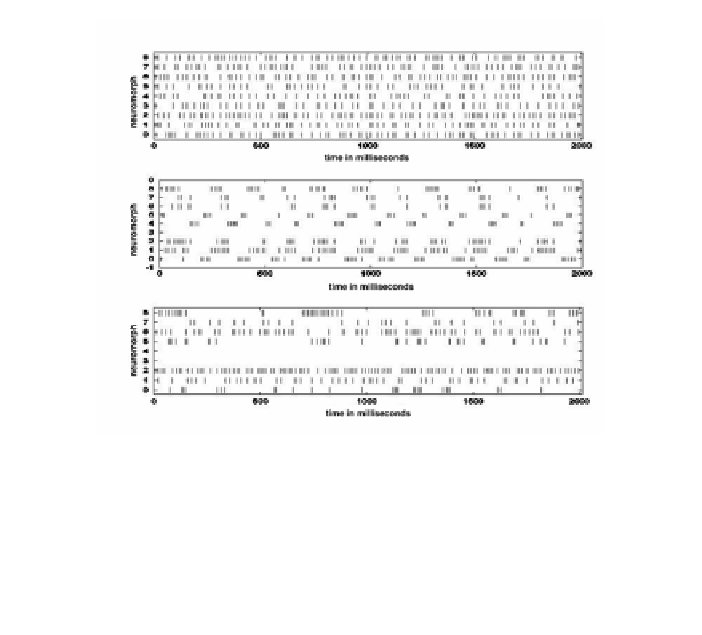Biomedical Engineering Reference
In-Depth Information
Figure 3
. Spike rasters of nine neuromorphs in a winnerless competition network.
Top
: Spik-
ing in the absence of stimulus and interconnections.
Middle
: Neuromorphs connected via
asymmetric inhibitory synapses and driven by a fixed pattern of stimuli. Periodic behavior is
evident.
Bottom
: Same network, but with the stimuli rotated by one neuromorph. Note a dif-
ferent, weaker cyclic behavior.
network is shown in the series of raster plots in Figure 3. The top plot illustrates
quiescent behavior in the absence of any coupling or stimulus—the units are
firing fairly steadily and independently of each other. When the neuromorphs
are interconnected and driven with spike patterns corresponding to the inputs
used by Rabinovich et al. (23), a cyclic pattern of firing results, shown in the
middle plot of Figure 3. The neuromorphs fire in a pattern that repeats with a
period just under 200 milliseconds. It is easily recognized by eye, and presuma-
bly could be easily recognized by a downstream neural network. Changing the
stimuli by doubling or halving their spike frequencies compresses or expands
the pattern, but does not change it qualitatively. Changing the stimuli by shifting
the connections by one or two neuromorphs changes the pattern, as shown in the
bottom plot of the Figure 3. The network producing this pattern of spikes is in-
terconnected as before, but the stimuli are displaced cyclically by one unit. The
effect is dramatic. There is a weak appearance of periodic firing by several of
the neuromorphs, but two or three seem to be firing at a roughly steady rate,
and two are not firing at all. The network strongly selects between the two stim-
uli, and thus serves to identify the inputs, especially for the conditions of the
middle plot.

